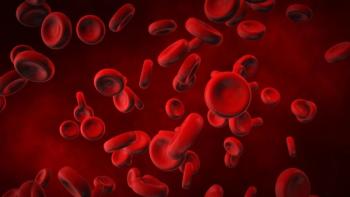
CRP Levels Before Transplant Linked With Survival in Multiple Myeloma
Elevated pre-transplant C-reactive protein was associated with worse overall survival in patients who underwent autologous stem cell transplantation for multiple myeloma, particularly in those who had transplant more than 12 months after diagnosis.
Elevated pre-transplant C-reactive protein (CRP) was associated with worse overall survival in patients who underwent autologous stem cell transplantation (ASCT) for multiple myeloma, particularly in those who had transplant more than 12 months after diagnosis, according to the results of a study
“Although the negative prognostic impact of elevated CRP in the early ASCT cohort is modest, it clearly identifies a high-risk subgroup in patients undergoing delayed ASCT, in whom the 2-year progression-free survival is only 25% and 5-year overall survival is only 24%,” wrote Rajshekhar Chakraborty, MD, of the Mayo Clinic in Rochester, Minnesota, and colleagues. “Prospective studies on ASCT in multiple myeloma should evaluate the prognostic implication of serum CRP levels on survival both at diagnosis and at transplant.”
According to the study, elevated levels of CRP have a negative prognostic effect on overall survival in patients with multiple myeloma in the context of Arkansas total therapy protocols and in patients treated with anthracycline- and thalidomide-based induction regimens. In contrast, a decrease in CRP in patients with smoldering disease is associated with improved progression-free and overall survival.
In this study, Chakraborty and colleagues hypothesized that elevated pre-transplant CRP would be associated with worse overall survival. They looked at data from 1,111 patients with newly diagnosed or relapsed/refractory myeloma who underwent transplant at the Mayo Clinic from 2007 to 2015. Elevated CRP was defined as greater than the upper normal limit of 8 mg/dL.
The majority of patients (76%) received early transplant (12 months or less from diagnosis). No associations were found between CRP and pre-transplant response, bone marrow plasma cell percentage, or labeling index. However, elevated CRP did increase the likelihood of having circulating plasma cells prior to transplant (33% vs 19%; P < .001).
Among those patients who underwent early transplant, those with elevated CRP had significantly worse overall survival compared with normal CRP levels (91 months vs not reached; P = .011).
In the delayed transplant cohort, patients with elevated CRP also had significantly worse overall survival compared to those with normal levels (30 months vs 73 moths; P < .001). In this group, patients with elevated CRP had a higher proportion of International Staging System (ISS) stage II and III disease at diagnosis compared to those with normal CRP levels. Elevated CRP was an independent prognostic marker for overall survival among patients with delayed transplant (hazard ratio, 2.0; 95% CI, 1.0–3.8; P = .045).
“This study has limitations. It is a retrospective study and the findings need to be validated prospectively and by other groups,” the researchers wrote. “However, given the lack of reliable prognostic markers in relapsed/refractory multiple myeloma other than response to prior therapy, the magnitude of impact of elevated CRP prior to ASCT in this population can be helpful in risk stratification.”
Newsletter
Stay up to date on recent advances in the multidisciplinary approach to cancer.


















































































